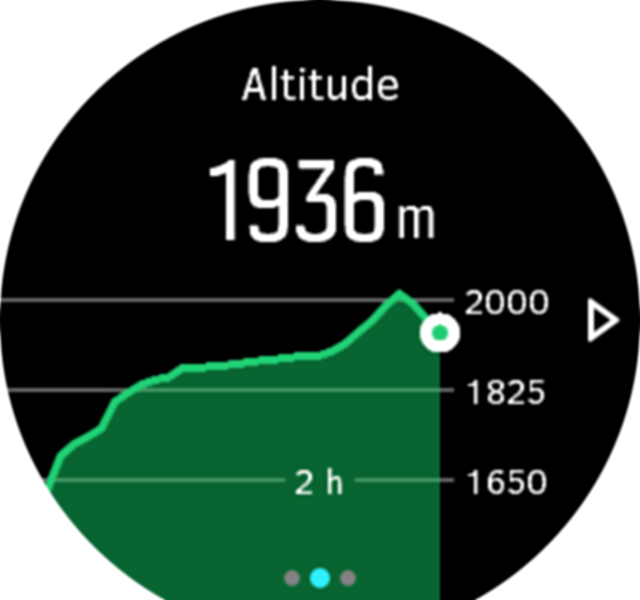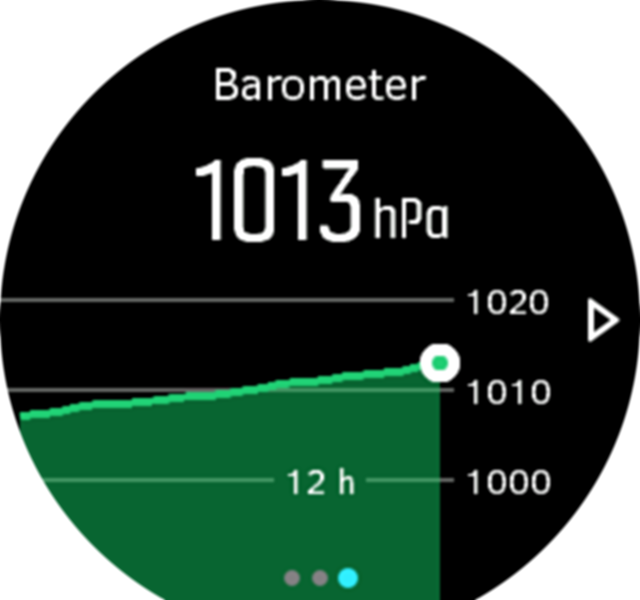A barometer watch continuously measures absolute air pressure using the built-in pressure sensor. Based on this measurement and reference values, it calculates altitude (altimeter, or alti) or sea level air pressure (barometer, or baro).
There are three alti-baro profiles available: altimeter, barometer, and automatic. The watch uses the automatic profile by default for interpreting air pressure changes as changes in altitude or weather based on your movement.
When you are not recording an activity:
- vertical movement will generate changes in the Altitude graph available in the Outdoor insight of your watch.

- being at a constant altitude for more than 12 minutes, the watch interprets any change in air pressure as weather changes and updates the Barometer graph available in the Outdoor insight of your watch.

When you are recording an activity, every sport mode comes with the ideal profile according to the activity:
- the altimeter profile should be selected when your activity involves changes in altitude (such as hiking in the mountains or trail running).
- the barometer profile should be selected when your activity does not involve changes in altitude (such as running on a track or sailing).
- the automatic profile should be selected when you want your watch to automatically detect which profile is best for the ongoing activity according to your movements.
Learn more about the settings options:
Altimeter profile:
- The best option for all activities with altitude changes.
- All pressure changes are interpreted as altitude changes
- For mountaineering or long hikes, where you are also interested in weather changes, the automatic profile could also be used.
Barometer profile:
- Relevant for indoor and/or open-air activities with no altitude variation.
Automatic profile:
- Switches between barometer and altimeter profile are on your movement and the rate at which pressure changes:
- if your watch senses vertical movement, it switches to the altimeter profile.
- if altitude changes are very small (less than 5 meters of vertical movement within 12 minutes) or the changes are very slow, the watch switches to the barometer profile and it interprets air pressure changes as weather changes.
Note: If the altimeter profile is on for an extended period of time in a fixed location while the local weather changes, the watch may give incorrect altitude readings. If you use the altimeter profile and the weather changes frequently while you go up or down in altitude, the watch may give you incorrect readings. If you use the barometer profile for an extended period of time as you go up or down in altitude, the watch assumes that you are staying at the same altitude and interprets your changes in altitude as changes in sea level air pressure (weather changes). It may, therefore, give incorrect air pressure readings.